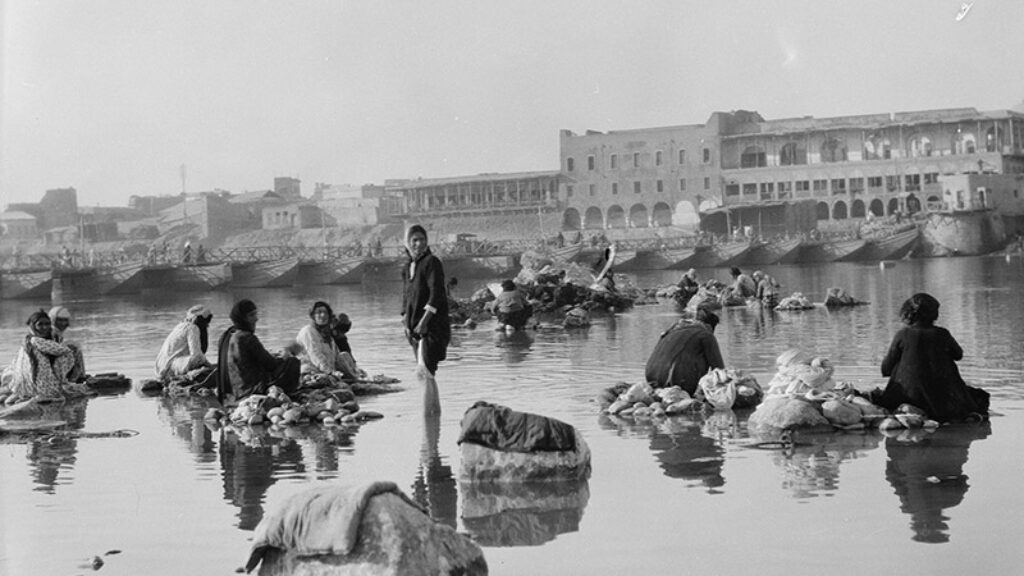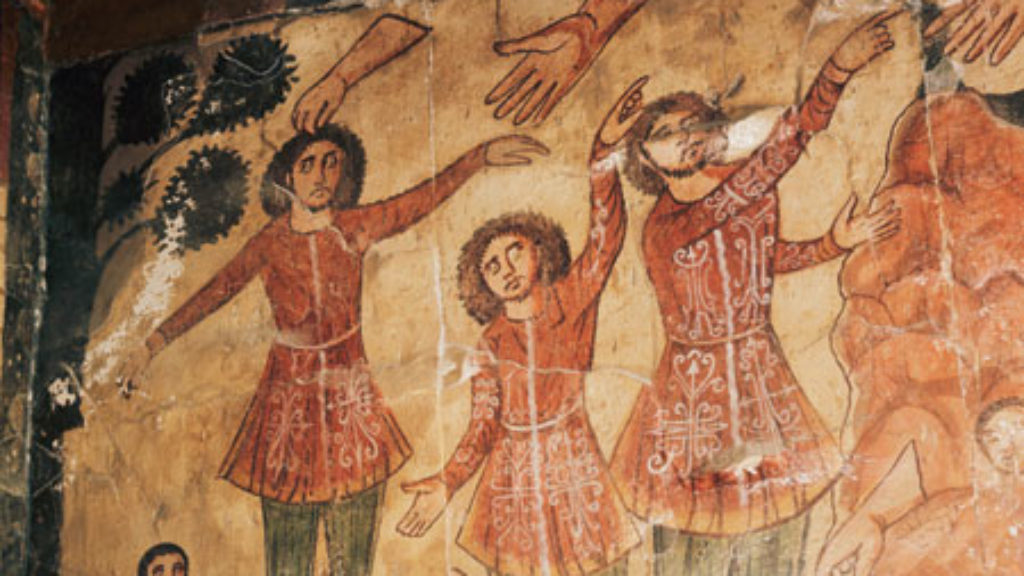“I Will Not Speak to Dullards”
In 2014, I had just graduated from college and moved to New York City, where I was trying to pray with a minyan as often as possible. In frustration, I wrote a blog post laying out a points system for Orthodox services:
–5 points if the women’s section feels like a sardine can. –7 points if I had to kick men out of the women’s section. –2 points for each man who takes a phonecall in the women’s section in the middle of davening. . . . +3 points for every other woman who is there.
Eight years later, on January 4 of this year, I put my toddler to bed and tuned into a Zoom lecture on Jewish women’s prayer at the Drisha Institute by my friend Dalia Wolfson. I was enjoying the presentation when the slide changed and the new header read “Leah Horowitz,” which is the name of my great-grandmother, for whom I was named. This Leah Horowitz, though, had lived in eighteenth-century Poland and written one of the most important and learned tekhines (womens’ supplicatory prayers) of the time.
Quickly, I pulled up the YIVO Encyclopedia entry on Leah Horovitz (their spelling) and sent it to my family WhatsApp group. “Any chance we’re related?” I wrote. Five minutes later my brother responded with a screenshot of his extensive genealogy work on Geni.com. Leah Horowitz was my father’s mother’s father’s father’s father’s mother’s father’s mother’s father’s sister: our eighth great-aunt.
I am unusually fortunate in being able to study works of Jewish scholarship written by many of my more recent family members. But to discover an eighteenth-century aunt who wrote, “Surely [the legitimacy of women’s prayer] does not escape any clear-eyed person,” more than two hundred years ago was a new and exciting kind of yichus. As for those who were not clear-eyed, Horowitz adapted Proverbs 23:9: “I will not speak to dullards.” That night I began to tear through everything I could find about her.
Chava Weissler’s 1999 Voices of the Matriarchs: Listening to the Prayers of Early Modern Jewish Women has a whole chapter called “Tears for the Shekhinah,” which shows how Horowitz understood the importance of the prayers of her fellow women through the theology of Lurianic Kabbalah. And Moshe Rosman has just published “Leah Horowitz’s Tkhine Imohos: A Proto-Feminist Demand to Increase Jewish Women’s Religious Capital,” which reads her even more radically. All agree that Horowitz was, as Rosman puts it, “among the Jewish intellectual elite of her era and region. Very few men would have been able to match her . . . and virtually no other women.”
Every historical source about Leah Horowitz underlines her scholarship—there is even a fascinating anecdote, retold by Weissler, about a learned argument between her and the chief rabbi of Berlin at a wedding. A story told about her in the famous The Memoirs of Ber of Bolechow is perhaps even more revealing. Leah’s father had been the rabbi of Bolechow, in present-day western Ukraine. When he left for a new position, Leah’s brother Mordechai took over for him, and Leah and her husband lived with her brother. In his memoirs, Ber describes being tutored in Talmud by Mordechai as a boy. Mordechai wasn’t healthy, and midway through the class he would often go to rest, leaving Ber to review the text on his own. The “learned and famous” Leah was there and would “notice how I did not understand the discussion in the Talmud and Rashi’s commentary.” Ber would tell her “some of the words of the Talmud . . . and she would begin to recite the words of the Talmud or Rashi by heart, in clear language, explaining it well as it was written there.”
Leah’s extraordinary talmudic prowess shines through in her great prayer Tkhine Imohos (Supplication of the Matriarchs), to be read on the Shabbat before Rosh Hodesh. First printed in Lemberg (Lviv) sometime between 1788 and 1796, her text begins with a Hebrew introduction arguing for her new prayer’s relevance and necessity. “Behold, I the seer have seen a bad thing among my people. Month in and month out when they bless the new month, the tkhines they say are non-canonical,” Horowitz begins. Therefore, a new, more halakhically and theologically appropriate tekhine, to be recited for the blessing of the new month, was essential:
Even though it is not often that a woman engages in Torah discourse, “the crown of Torah is set out [for all the inhabitants of the world, including women].” . . . I believe I am benefiting the public. Since in any event women are talkative, gossiping in the synagogue on the Sabbath [instead of praying].
Basing herself on Maimonides’s enumeration of the commandments, Horowitz goes on to argue that, in post-Temple times, Jewish women are obligated to perform 411 commandments, “not many fewer than the 425 [for men].” Moreover, women must take responsibility for their family’s spiritual life:
If a husband wants to neglect Torah study or have his sons neglect it, then blessed is the wife who prevails over him and brings her sons to the synagogue [to study] and waits for her husband [to return from the beit midrash] This is our maxim.
In the Lemberg printing, the Tkhine follows, first in Aramaic (a language few men of her day could really read, let alone write) and then in Yiddish for “those [men] incapable of study, and women.” It calls for a rebuilding of Jerusalem and national redemption by virtue of the good deeds and prayers of the matriarchs. The Yiddish version concludes:
We call you our beloved Father and ask that you grant us and all who apply themselves to your holy Torah—who expound on the holy books and who compose prayers and supplications for us—[that we] should merit having proper and healthy offspring (zera kasher hayim vekayamim). They should be Torah scholars who serve God with a pure heart, with love, together with the pious. Amen. May it be His will.
The Aramaic version of the prayer calls only for boys who are Torah scholars, but here, in the version for women, as Rosman notes, Horowitz “allows for the possibility that the coveted scholars might be girls. In other words, she is expressing hope for the creation of more women like herself.”
If Leah Horowitz were alive today, visiting the Jerusalem that she fervently prayed to see rebuilt, she would find its hills sprinkled with institutions of higher Talmud learning for women. In them, women speak Hebrew, English, Spanish, French, and even sometimes Yiddish, as they pore over Aramaic texts. In doing so, they approach something like the level of learning possessed by the woman who prayed their schools into existence more than two hundred years ago.
Suggested Reading

Persian Daughters of Israel
Leah Sarna imagines Jewish and Gentile women doing their laundry on the banks of the Tigris, sharing tricks for keeping their headscarves tied and their bedrooms pure. She reviews Shai Secunda’s new book on just how Babylonian the Babylonian Talmud was.

It’s Spring Again
A startling painting on the walls of the ancient synagogue at Dura Europos depicts some 2nd-century Jews who have, until recently, been dead and who look very surprised to have been reconstituted and revived.
Babel’s Transcendent Mistakes
When I was 12, my parents bought me a gigantic Yiddish-Russian dictionary. Maybe this was their way of compensating for the fact that they had not told me I was Jewish until second grade, when I came home singing a Ukrainian ditty with the word “zhid.”

These Heroic Girls
On Christmas Eve, 1941, three young Jewish women spent the evening in the company of Nazis, secretly gathering intelligence on behalf of the underground Jewish resistance.
Comments
You must log in to comment Log In